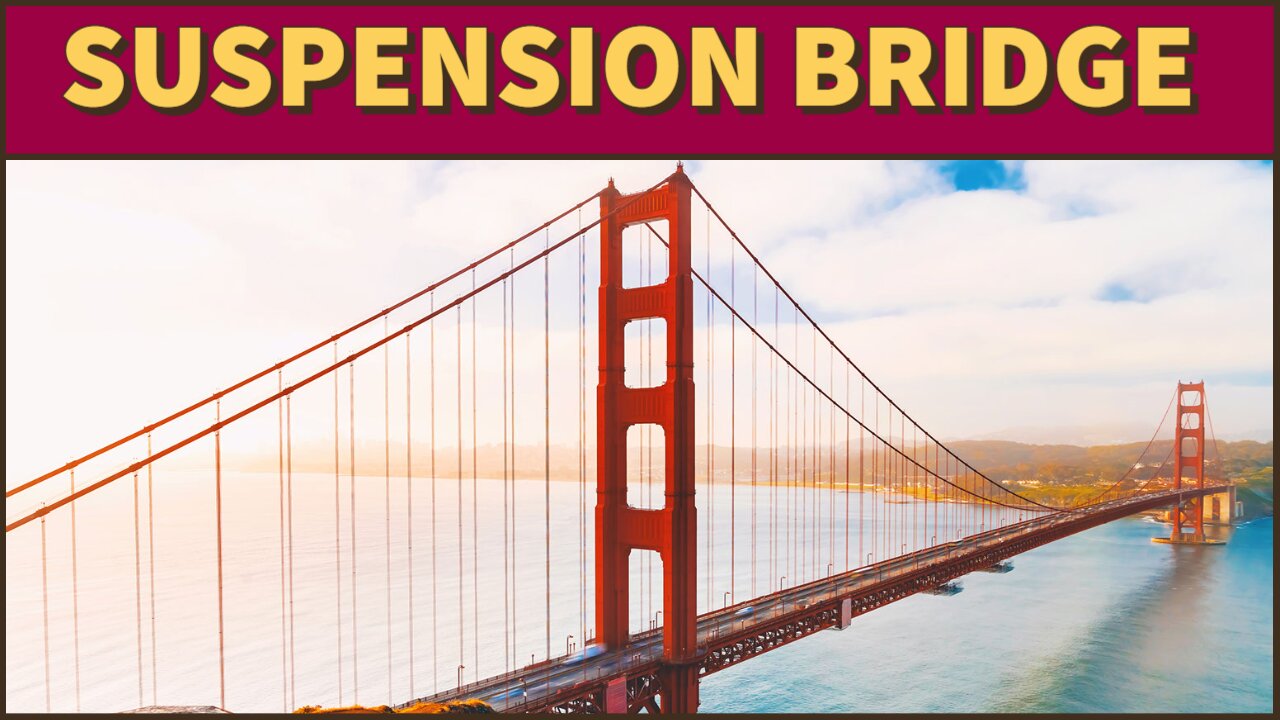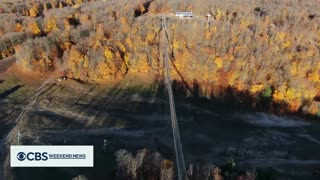Premium Only Content

What is a Suspension Bridge
SUSPENSION BRIDGE
When you think of bridges, you might picture a classic suspension bridge, such as the Brook- lyn Bridge in New York or the Golden Gate Bridge in San Francisco. One look at the slender, graceful design of these structures can make you wonder how they stay up, much less support traffic.
Suspension bridges date back to the fifteenth century and comprise a deck, towers (called abutments) at either end, and a network of cables that form a parabolic curve (a parabola is a curve where any point is at an equal distance from a fixed point and a fixed straight line). A main cable runs horizontally from tower to tower, and vertical cables run off the main cable, supporting the weight of the deck and transferring it to the towers. The main cable is actually anchored beyond the abutments, to prevent the bridge structure from giving in to the force of compression. The weight of the bridge itself
(called dead weight) pulls inward on the towers; however, the cables counteract this with an equal force. In other words, compression from the bridge's deck and tension from the cables are balanced.
Because of their design, suspension bridges have many advantages over other kinds of bridges. For one thing, they can span great distances. The longest suspension bridge in the world is the Akashi-Kaikyo Bridge in Japan, covering an impressive 12,831 feet. However, suspension bridges have disadvantages, too, which engineers must take into consideration. For example, if the main cable is made of chain links or just one strand of cable, and a link in the chain breaks or the cable snaps, the bridge loses its tension and comes down. Also, if the deck of the bridge is too thin, it can lose its stability in heavy winds and shake itself to pieces, which is what happened to the Tacoma Narrows Bridge in 1940.
-
 0:06
0:06
ragibsukar
2 years agosuspension bridge , Vancouver
3 -
 37:00
37:00
PureGosu
2 years agoCapilano Suspension Bridge tour (Halloween)
31 -
 0:28
0:28
Karan708760
2 years agoCapilano Suspension Bridge
7 -
 2:16
2:16
DDOI
2 years agoWorld's longest timber-towered suspension bridge opens in Michigan
5 -
 0:35
0:35
lookand
2 years agoA suspension bridge collapses, 137 dead in India
3 -
 9:51
9:51
TheSpiike
2 years agoBrilliant Suspension Bridge and the Glade creek waterfalls
2 -
 53:01
53:01
State of the Second Podcast
18 hours agoDisarming Americans One Law at a Time (ft. Krate Tactical)
24.2K4 -
 44:36
44:36
The Official Steve Harvey
14 hours ago $0.91 earnedThe journey ain't easy, but the destination is worth it
26.8K2 -
 3:03:52
3:03:52
Price of Reason
16 hours agoBezos & Amazon FOLD After Annoying Trump! Paramount Faces TOUGH Choice! Borderlands 4 DELAYED!
126K29 -
 1:19:29
1:19:29
Savanah Hernandez
16 hours agoRogue Judges Continue Blocking Trump's Executive Orders: The First 100 Days
97K60